We are beginning to see some patterns that prove to be helpful when it comes to succeeding with some of the most wanted goals of publishers and editors:
- To attract more digital subscribers.
- To create a newsroom culture that emphasizes mobile first.
- To select content where data supports greater reader engagement.
Which is why I am interested to read this piece about The Virginian Pilot and how it has made advances in all three of these areas.
The Pilot’s team concentrated on a digital first strategy by shifting their priorities from sustaining the print product —what we see happening in a large majority of newsrooms today—-to building a digital subscriber base.
The first step was to focus in on their digital audiences. The Pilot did so by creating a digitally-focused reporting team called the DART squad — Digital Action in Real Time — that responds to breaking news and trending topics of the day. This team also tackles enterprise stories and “obsession beats,” the stories that don’t fall under any of The Pilot’s traditional beats, Reece said. Some of those have included stories on maritime port issues and child care regulations in Virginia.
The results tell the success story:
- 32% more page views
- 26% more share of local stories
- 23% increase in average read time
Obviously, The Pilot’s team faced the same skepticism that you find in many newsrooms: using data analytics to select content may divorce the paper from true mission journalism.
Such is not the case. We now have the means to know what stories have greater traction. And, although I am a proponent of providing broccoli and smoothies as a good combo for content selection —what readers must know, and what might be nice to know—-I believe that a newsroom with smart journalists can do both well.
Think mobile first
At all my workshops I advice journalists to think of how their story will play on the smartphone when they go out to cover the story.
Think of the smallest platform and suddenly you will be thinking video, audio, and all types of visual assets that are not possible, or will not come to mind, when you visualize your story as a print product. So, shed those ideas of “my story will be four columns at the top of page 4” and start thinking “my story will be linear, multimedia and will appeal to various senses. What is the graphic potential of my story?”.
Digital transformation takes time, but it also takes strategic thinking. Ask yourself the question: how is my newsroom aiming to become mobile first?
Ultimately, it is up to every individual reporter/journalist wanting to move in the digital direction.
The Pilot’s study reminds us how it can be, and how to succeed at it.
Mario’s speaking engagements
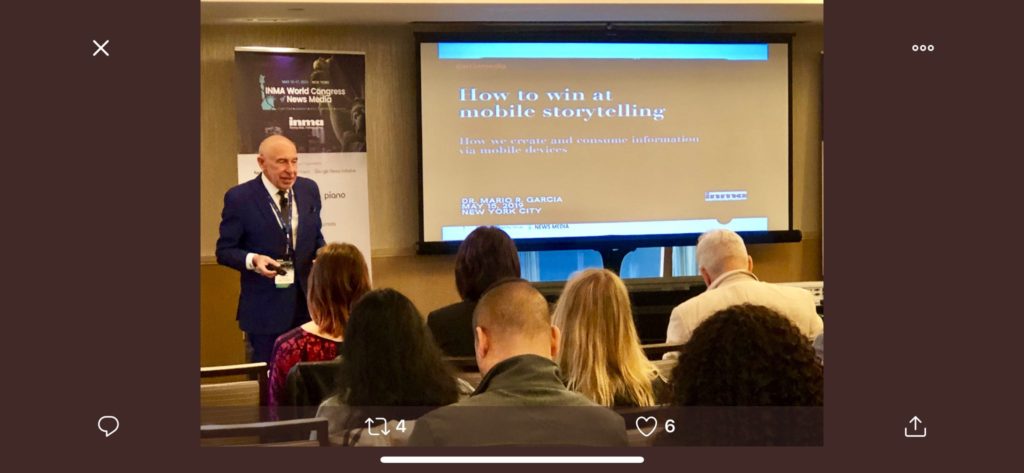
Here are places where I will be taking the message of mobile storytelling in the weeks ahead:
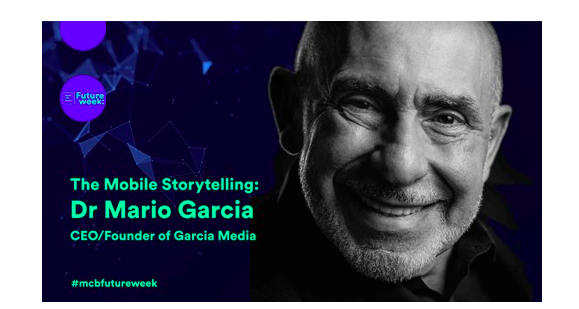
June 12, NEC Media City, Bergen, Norway, Storytelling workshop for Editors
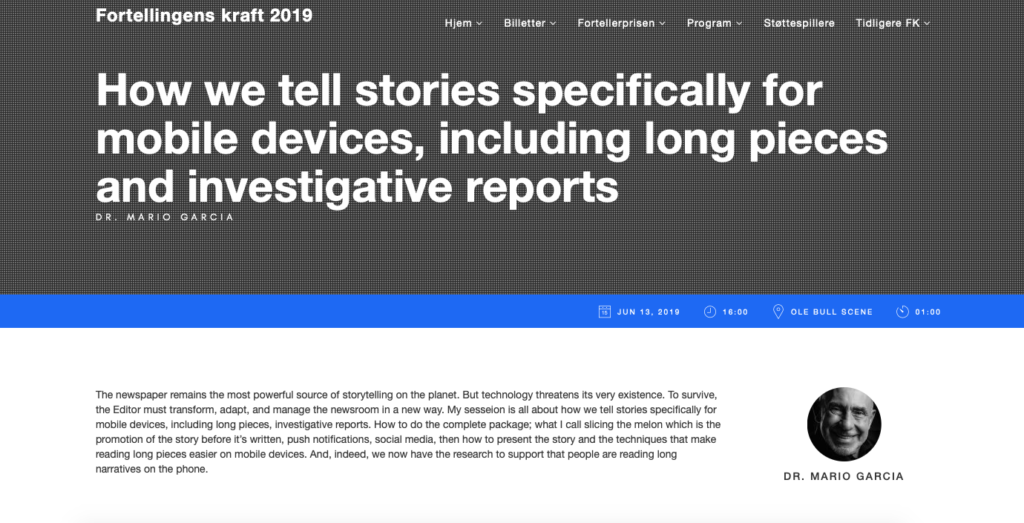
June 13, Fortellingens kraft 2019, Bergen, Norway, Long form Mobile Storytelling for Writers
July 11, Florida Media Conference, St. Petersburg, FL, Keynote for editors: The mobile first newspaper strategy.
Mario’s weekend rituals…..
Monocle interviews me about what I do on a typical weekend (is there such a thing? Not for someone like me who is seldom in the same location twice. But I gave it my best shot, for what may come as a normal weekend, when I am home in New York! Enjoy.
https://monocle.com/minute/2019/04/27/
Pre-order The Story
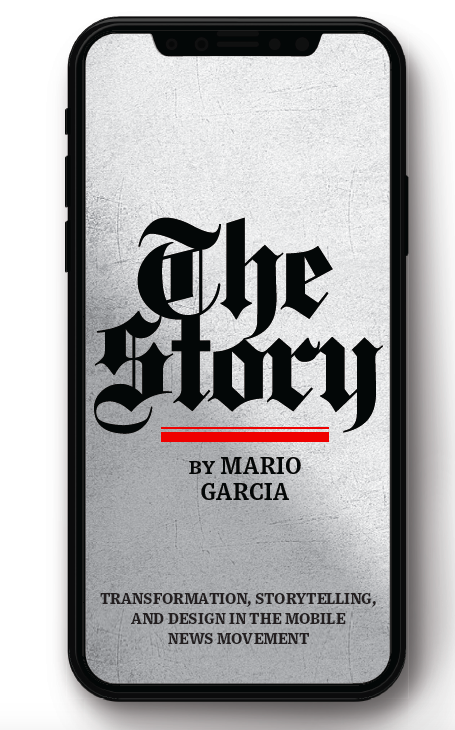
The newspaper remains the most powerful source of storytelling on the planet. But technology threatens its very existence. To survive, the Editor must transform, adapt, and manage the newsroom in a new way. Find out how, pre-orderThe Story by Mario Garcia, chief strategist for the redesign of over 700 newspapers around the world.
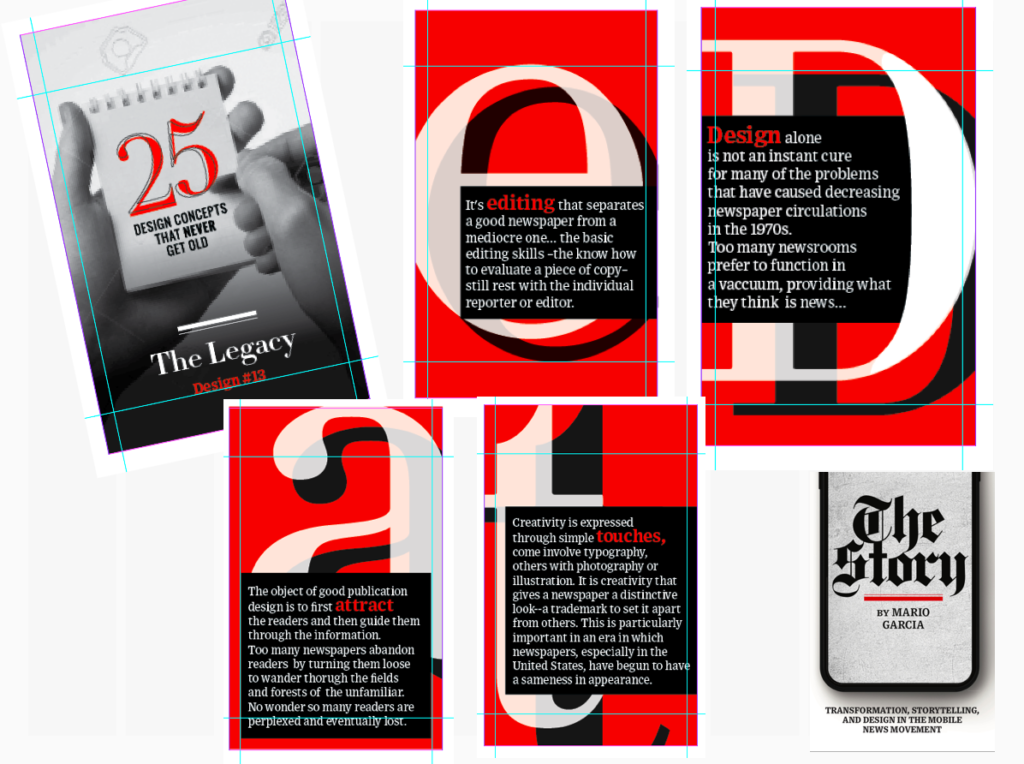
Order here:
https://thaneandprose.com/shop-the-bookstore?olsPage=products%2Fthe-story

An interview of interest
http://www.itertranslations.com/blog/2019/3/11/fd60ybflpvlqrgrpdp5ida5rq0c3sp
TheMarioBlog post #3067